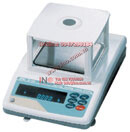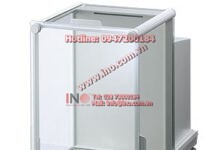Overview
The SIGNAL RECOVERY model 7265 uses the latest digital signal processing (DSP) technology to extend the operating capabilities of the lock-in amplifier to provide the researcher with a very versatile unit suitable both for measurement and control of experiments. At the same time due consideration has been given to the needs of those users wishing only to make a simple measurement quickly and easily.
Operating over a frequency range of 1 mHz to 250 kHz, the model 7265 offers full-scale
voltage sensitivities down to 2 nV and current sensitivities to 2 fA. The instrument has a
choice of operating modes, signal recovery or vector voltmeter, for optimum measurement accuracy under different conditions, and the use of DSP techniques ensures exceptional performance.
The instrument performs all of the normal measurements of a dual phase lock-in amplifier, measuring the in-phase and quadrature components, vector magnitude, phase angle and noise of the input signal.
Several novel modes of operation are also include to give greater levels of versatility than ever before, for example:
Virtual Reference
Under suitable conditions, this mode allows measurements to be made in the absence of a reference signal
Dual Reference
In this mode the instrument can make simultaneous measurements on two signals at different reference frequencies, which is ideal, for example, for use in source compensated optical experiments
Spectral Display
This allows the spectrum of the signals present at the input to be calculated and displayed, which can help when choosing the reference frequency
Transient Recorder
In this mode, the auxiliary ADC inputs can be used as a 40 kSa/s (25 μs/point) transient recorder, with the captured transient being displayed graphically
Frequency Response
This built-in experiment allows the internal oscillator frequency to be swept between preset frequencies, while simultaneously measuring the input signal magnitude and phase. The mode is ideal for determining the frequency and phase response of external networks.
Harmonic Analysis
Most lock-in amplifiers will measure signals at the applied reference frequency or its second harmonic. In the 7265, operation is possible at harmonics up the 65,536th, and in Dual Harmonic mode, simultaneous measurements can be made on two harmonics.
- 1m Hz to 250 kHz operation
- Direct digital demodulation without down-conversion
- 10 µs to 100 ks output time constants
- Synchronous oscillator output for input offset reduction
- Dual Reference, Dual Harmonic and Virtual Reference modes
- Spectral display mode
- Scanned probe microscopy
- Optical measurements
- Audio studies
- AC impedance studies
- Atomic force microscopy
The SIGNAL RECOVERY model 7265 uses the latest digital signal processing (DSP) technology to extend the operating capabilities of the lock-in amplifier to provide the researcher with a very versatile unit suitable both for measurement and control of experiments.
Specifications
outGeneral Dual-phase DSP lock-in amplifier operating over a reference frequency range of 0.001 Hz to 250 kHz. Wide range of extended measuring modes and auxiliary inputs and outputs. User-upgradeable firmware.
|





















… [Trackback]
[…] Info on that Topic: ino.com.vn/khac-do-luong-kiem-tra/signal-recovery-dual-phase-dsp-lock-in-amplifier-model-7265/ […]
… [Trackback]
[…] Find More here to that Topic: ino.com.vn/khac-do-luong-kiem-tra/signal-recovery-dual-phase-dsp-lock-in-amplifier-model-7265/ […]
… [Trackback]
[…] Here you will find 62198 more Info on that Topic: ino.com.vn/khac-do-luong-kiem-tra/signal-recovery-dual-phase-dsp-lock-in-amplifier-model-7265/ […]
… [Trackback]
[…] Find More Info here on that Topic: ino.com.vn/khac-do-luong-kiem-tra/signal-recovery-dual-phase-dsp-lock-in-amplifier-model-7265/ […]